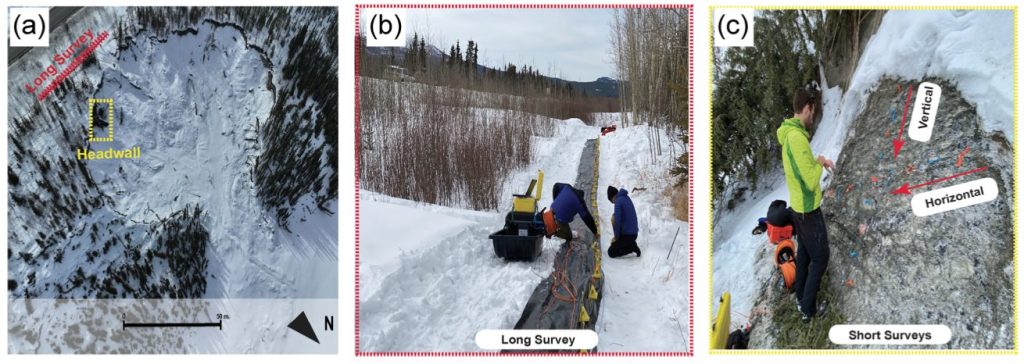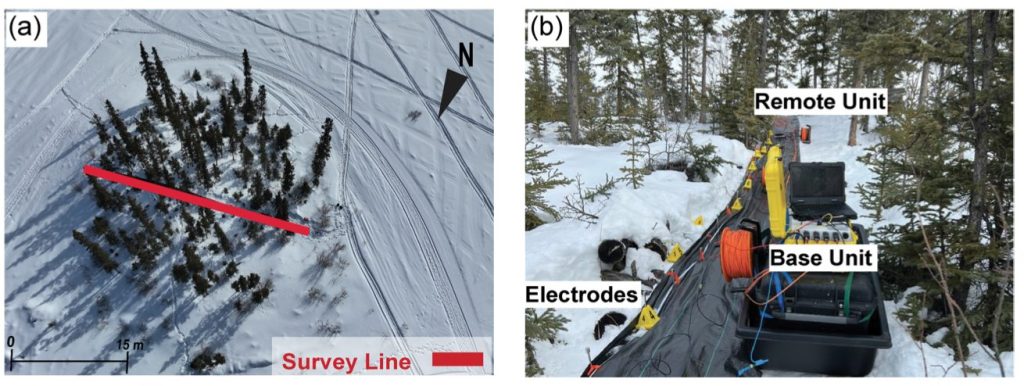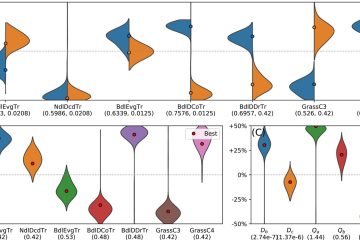Conventional geophysical techniques like electrical resistivity, seismic surveys, or ground-penetrating radar alone often produce ambiguous results due to the overlap of material characteristics between frozen and unfrozen ground.
Detecting ground ice in permafrost is crucial for climate research and infrastructure, but traditional methods often struggle to distinguish it. This study by Hosein Fereydooni examines the dielectric properties of ground ice as a unique fingerprint. Field measurements were taken at two Yukon permafrost sites: a retrogressive thaw slump and a pingo. Comparing these with electrical resistivity and impedance results, he found relaxation time is a more reliable indicator for ground ice detection.

(a) The retrogressive thaw slump, headwall, (b) long and (c) short SIP survey.
Hosein’s team developed a method to quantify relaxation time from Spectral Induced Polarization (SIP) data measured by the FUCHS III device. The method’s effectiveness was demonstrated through synthetic data and two field surveys. SIP field measurements, ranging from 1.46 Hz to 40 kHz, were conducted on a retrogressive thaw slump and a pingo in Yukon, Canada. The extracted relaxation times were mapped to pseudo-depths obtained from single-frequency inversion. This study proposes a relaxation time range from 10 to 400 μs for ground ice, and the results demonstrate that this range can detect ground ice spectra in field studies. Comparison with observations in a borehole and an exposure of permafrost indicate that relaxation time is less ambiguous in detecting ground ice in warm permafrost than conventional methods such as electrical resistivity tomography.

(a) The pingo site and (b) the survey line with the FUCHS device.
Fereydooni, H., Gruber, S., Stillman, D., and Cronmiller, D.: Detecting ground ice in warm permafrost with the dielectric relaxation time from SIP observations, EGUsphere [preprint], https://doi.org/10.5194/egusphere-2025-1801, 2025.



0 Comments